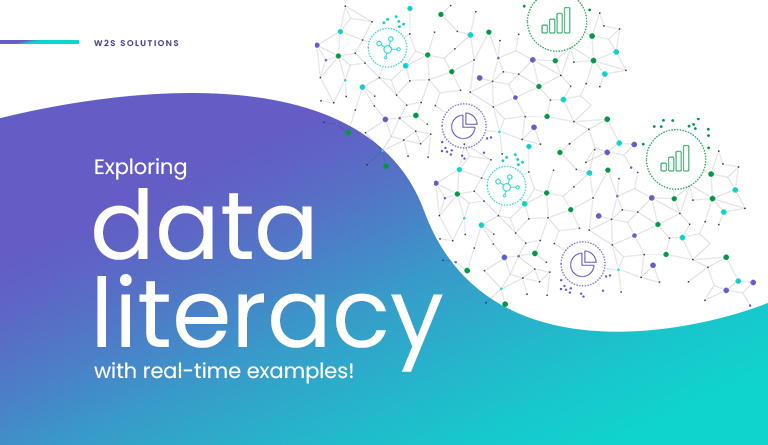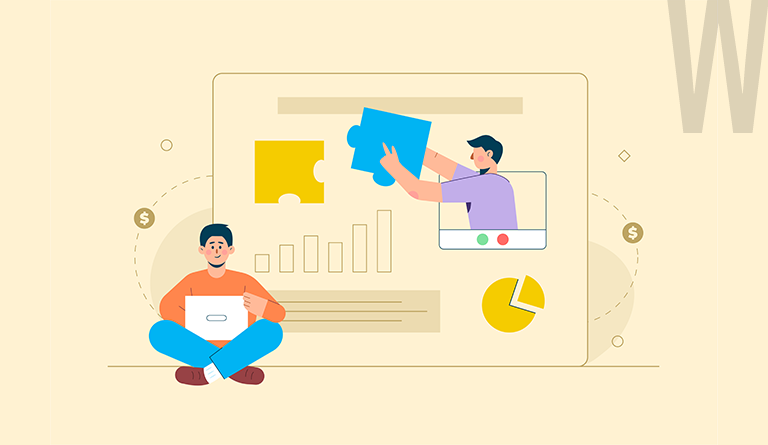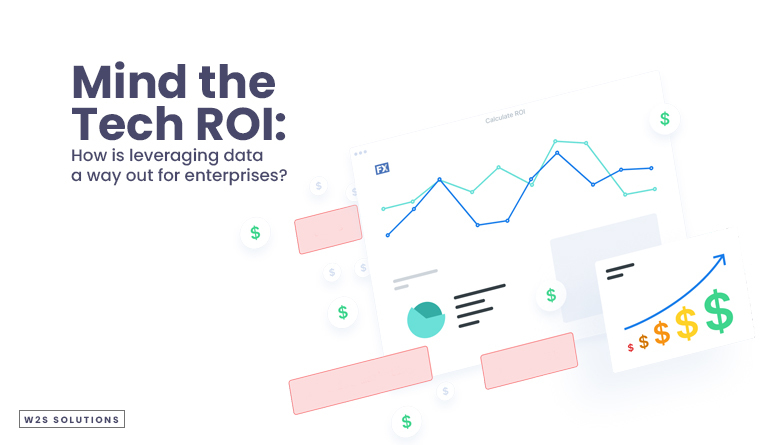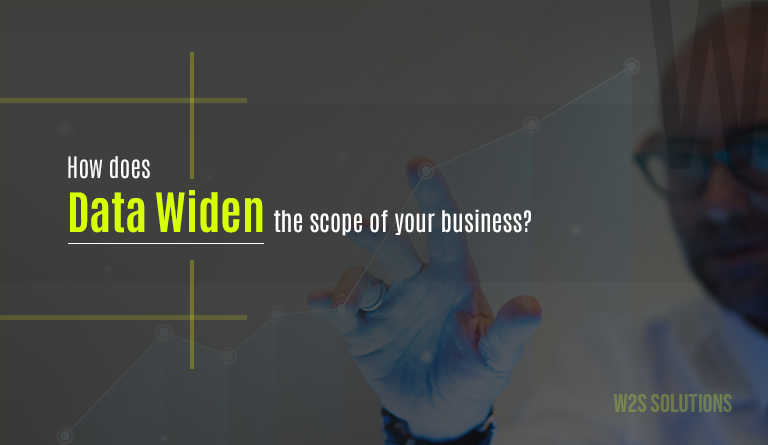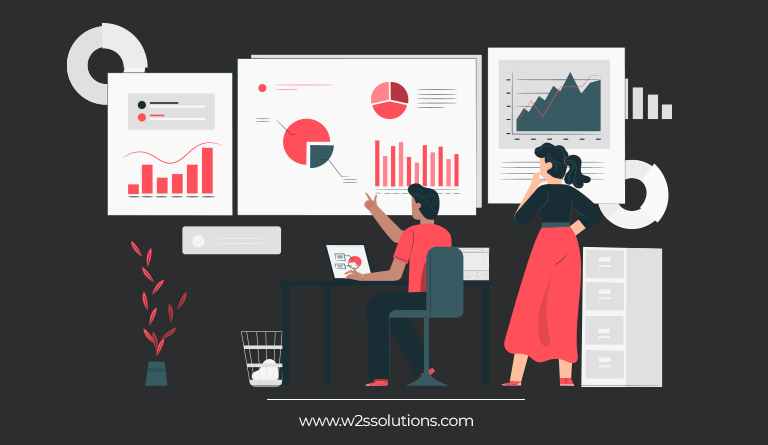Overview: Data is the magic word that transforms business. At least that’s what businesses believe! While it’s not completely false, experts may say that understanding the context of data is more important than just being on the data wagon. Know why businesses should focus on data literacy in the following article.
Crowned as the sexiest job of the 21st century, the term “data analyst” holds its place among students, tech enthusiasts, and businesses. The hype wagon in the tech industry doesn’t usually halt too long, but the popularity of data suggests otherwise. The market size of the data is expanding rapidly, and experts believe that this data revolution will lay the foundation for the future of technology and innovation. Many leading IT solutions and service providers in the market swear by data to fuel innovation across industries.
One of the biggest successes of data is that it crossed the “jargon” barrier and reached an end-user. This is not a common occurrence, but thanks to the age of information, consumers are now smarter about their data and are really conscious about the detour their data takes.
As a leading data engineering company in the market, we got curious about the curiosity of the audience and have decided to help our audience connect the dots. In this article, we have explained the basics of “data” and everything around it and how data analytics helps a business using real-time industry examples. Feel free to dive in!
What is data literacy, and why is it important for businesses to be data literate?
Data is the refined form of information, and data literacy is nothing but understanding and communicating the context of the data. Being data literate can change an organization drastically, allowing it to explore options scientifically and make decisions consciously, significantly reducing the risk horizon.
It looks a lot easy on the paper, but data literacy is one of the most complex challenges an organization may face. This is because the change is more internal than external. Some of the significant benefits of being data literate include better decision making, reduced risk horizon, greater innovation, transparent processes, etc.; all these help an organization’s internal structure, allowing them to function effectively. So, the effect of data literacy on an end consumer is almost always indirect. This makes the whole process a complex cocktail of management, technical, and human resource problems! Business data analytics tools fill this accessibility gap and help companies leverage data easily.
And today’s businesses must have a data strategy to bring their A-game to the market! With the level of options available for a consumer and the market being heavily influenced by the choices of the consumers, it is fair to say that businesses need to go the extra mile to satisfy a consumer. Irrespective of the size of your business, this is impossible to achieve without data!
Read Also – How a well-implemented Data Analytics Strategy can transform your Enterprise?
Example-1: Consumer analytics to cross-sell and up-sell for an ISP
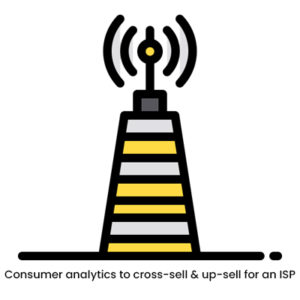
Our client- a popular telecommunications company in the USA, had a wider base of customers, opting for our client’s internet services. We collaborated with the client to help them understand the various dimensions of their customers and devise a strategy to enhance their brand loyalty.
The ISP space was pretty packed, and newer brands disrupted the existing brand loyalty of our audience- so time is of the essence. This was one of the primary problems we faced while formulating our solutions. So, we leveraged Kotlin app development to target a wider base of customers.
Our primary goal is to understand our audience. So, we built a master data visualization tool that collects and stores important user data and helps communicate the data across different departments effectively. This ensures that different teams have the firepower to devise the best strategies in their respective domains. We also leveraged python web app development to bring overall fluidity to the system.
As the next step, we organized the consumer data so the client could build aggressive marketing campaigns. By identifying and focusing our marketing campaigns on dynamic user groups, the client could provide optimized and customized plans to weed out the competition. Many users opted for upgrading from their existing plans, thus crafting a better relationship with our client. This also helped our client convert their everyday users to brand advocates!
Example-2: Reinforcing the coastal security of a country!
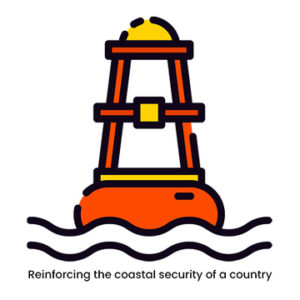
We collaborated with the prestigious Indian government to strengthen the country’s coastal regions. The coastal region of India is more vulnerable than the country’s other regions, often a victim of cyclones, tsunamis, and floods, among many others.
The goal is to devise a system that predicts abnormal, sudden ocean and climate activities. From here, coastal security can be alerted, and necessary measures can be taken to minimize the damage to life and property.
One of the biggest problems in envisioning such a system is that the output needs to be highly reliable; else, it costs both the people and the government! So, the best strategy is to keep the entire process data-centred. Also, the data needs to be stored in a central platform for different departments to access it. So, the navigation should also be straightforward and simple.
So, we leveraged cross-platform mobile app development to ensure that everyone can easily access the system. We built custom buoys that constantly record and transmit the ocean data to a server. We leveraged a cloud platform to store this data and distribute it to various teams, including scientists, analysts in the meteorological department, and the coastal security department. The data travels across different departments like in a funnel, so the crucial data is not missed.
If any abnormal activities are found, the coastal department can alert the people and have enough time to lock on an exit strategy! Being one of the top sustainability consulting companies in the market, we have ensured the system aligns with the government’s overall vision to achieve SDG.
You can also view more of our works and case studies here!
Wrapping this up,
While it’s a good thing that businesses are opting for data-centred strategies, they also have to remember that data is not the golden duck that keeps dropping one when needed! Rather, data reinforces their existing strategy, particularly in this highly digitalized marketplace. Effective leveraging of data also depends on various other factors, but for an organization to be data-driven, the workforce should share the organization’s vision to be data-centred. The bottom line is that irrespective of the domain, leveraging data is a must for a business to even exist in the current landscape. To excel, however, it should dissect the context of it!
